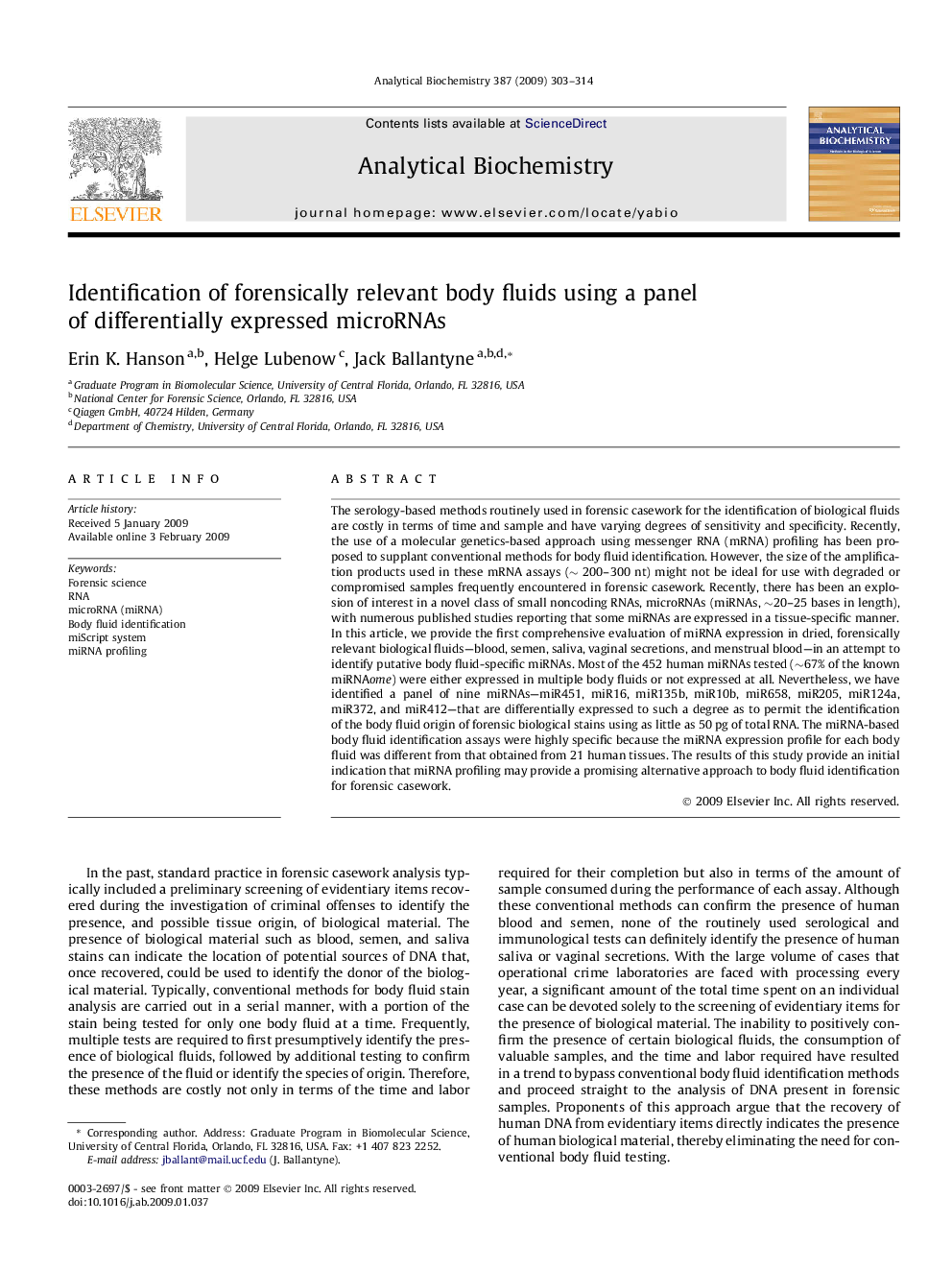| کد مقاله | کد نشریه | سال انتشار | مقاله انگلیسی | نسخه تمام متن |
|---|---|---|---|---|
| 1175447 | 961801 | 2009 | 12 صفحه PDF | دانلود رایگان |

The serology-based methods routinely used in forensic casework for the identification of biological fluids are costly in terms of time and sample and have varying degrees of sensitivity and specificity. Recently, the use of a molecular genetics-based approach using messenger RNA (mRNA) profiling has been proposed to supplant conventional methods for body fluid identification. However, the size of the amplification products used in these mRNA assays (∼ 200–300 nt) might not be ideal for use with degraded or compromised samples frequently encountered in forensic casework. Recently, there has been an explosion of interest in a novel class of small noncoding RNAs, microRNAs (miRNAs, ∼20–25 bases in length), with numerous published studies reporting that some miRNAs are expressed in a tissue-specific manner. In this article, we provide the first comprehensive evaluation of miRNA expression in dried, forensically relevant biological fluids—blood, semen, saliva, vaginal secretions, and menstrual blood—in an attempt to identify putative body fluid-specific miRNAs. Most of the 452 human miRNAs tested (∼67% of the known miRNAome) were either expressed in multiple body fluids or not expressed at all. Nevertheless, we have identified a panel of nine miRNAs—miR451, miR16, miR135b, miR10b, miR658, miR205, miR124a, miR372, and miR412—that are differentially expressed to such a degree as to permit the identification of the body fluid origin of forensic biological stains using as little as 50 pg of total RNA. The miRNA-based body fluid identification assays were highly specific because the miRNA expression profile for each body fluid was different from that obtained from 21 human tissues. The results of this study provide an initial indication that miRNA profiling may provide a promising alternative approach to body fluid identification for forensic casework.
Journal: Analytical Biochemistry - Volume 387, Issue 2, 15 April 2009, Pages 303–314